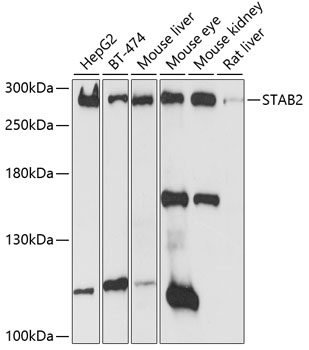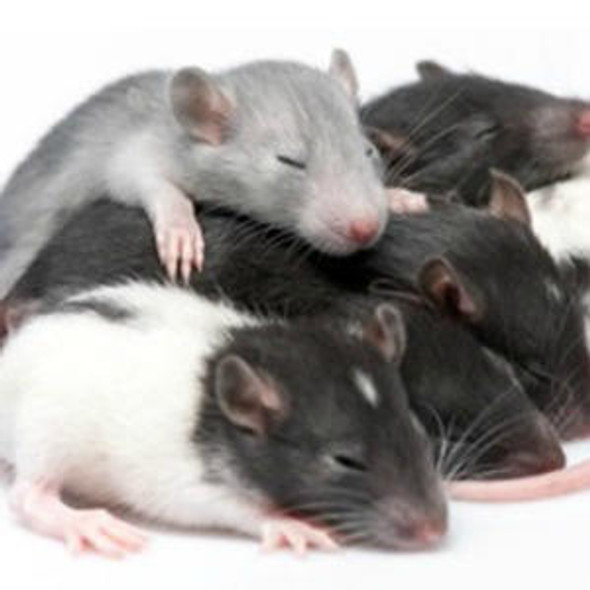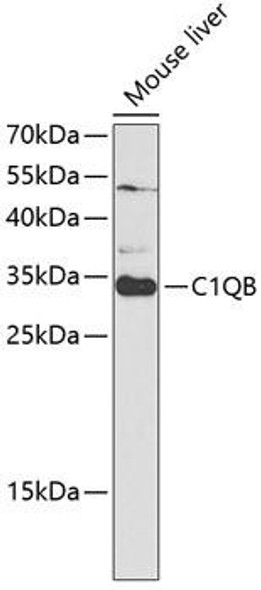| Background: | This gene encodes a large, transmembrane receptor protein which may function in angiogenesis, lymphocyte homing, cell adhesion, or receptor scavenging. The protein contains 7 fasciclin, 15 epidermal growth factor (EGF)-like, and 2 laminin-type EGF-like domains as well as a C-type lectin-like hyaluronan-binding Link module. The protein is primarily expressed on sinusoidal endothelial cells of liver, spleen, and lymph node. The receptor has been shown to bind and endocytose ligands such as hyaluronan, low density lipoprotein, Gram-positive and Gram-negative bacteria, and advanced glycosylation end products. Supporting its possible role as a scavenger receptor, the protein has been shown to cycle between the plasma membrane and lysosomes. |
| UniProt Protein Function: | Phosphatidylserine receptor that enhances the engulfment of apoptotic cells. Hyaluronan receptor that binds to and mediates endocytosis of hyaluronic acid (HA). Acts also, in different species, as a primary systemic scavenger receptor for heparin (Hep), chondroitin sulfate (CS), dermatan sulfate (DS), nonglycosaminoglycan (GAG), acetylated low-density lipoprotein (AcLDL), pro-collagen propeptides and advanced glycation end products (AGE). May serve to maintain tissue integrity by supporting extracellular matrix turnover or it may contribute to maintaining fluidity of bodily liquids by resorption of hyaluronan. Counter receptor which plays an important role in lymphocyte recruitment in the hepatic vasculature. Binds to both Gram-positive and Gram-negative bacteria and may play a role in defense against bacterial infection. The proteolytically processed 190 kDa form also functions as an endocytosis receptor for heparin internalisation as well as HA and CS. |
| NCBI Summary: | This gene encodes a large, transmembrane receptor protein which may function in angiogenesis, lymphocyte homing, cell adhesion, or receptor scavenging. The protein contains 7 fasciclin, 15 epidermal growth factor (EGF)-like, and 2 laminin-type EGF-like domains as well as a C-type lectin-like hyaluronan-binding Link module. The protein is primarily expressed on sinusoidal endothelial cells of liver, spleen, and lymph node. The receptor has been shown to bind and endocytose ligands such as hyaluronan, low density lipoprotein, Gram-positive and Gram-negative bacteria, and advanced glycosylation end products. Supporting its possible role as a scavenger receptor, the protein has been shown to cycle between the plasma membrane and lysosomes. [provided by RefSeq, Jul 2008] |
| UniProt Code: | Q8WWQ8 |
| NCBI GenInfo Identifier: | 61743980 |
| NCBI Gene ID: | 55576 |
| NCBI Accession: | NP_060034.9 |
| UniProt Secondary Accession: | Q8WWQ8,Q6ZMK2, Q7Z5N9, Q86UR4, Q8IUG9, Q8TES1, Q9H7H7 Q9NRY3, |
| UniProt Related Accession: | Q8WWQ8 |
| Molecular Weight: | 276,988 Da |
| NCBI Full Name: | stabilin-2 |
| NCBI Synonym Full Names: | stabilin 2 |
| NCBI Official Symbol: | STAB2 |
| NCBI Official Synonym Symbols: | FEX2; HARE; FEEL2; FELL2; FELE-2; SCARH1 |
| NCBI Protein Information: | stabilin-2 |
| UniProt Protein Name: | Stabilin-2 |
| UniProt Synonym Protein Names: | FAS1 EGF-like and X-link domain-containing adhesion molecule 2; Fasciclin, EGF-like, laminin-type EGF-like and link domain-containing scavenger receptor 2; FEEL-2 |
| UniProt Gene Name: | STAB2 |










